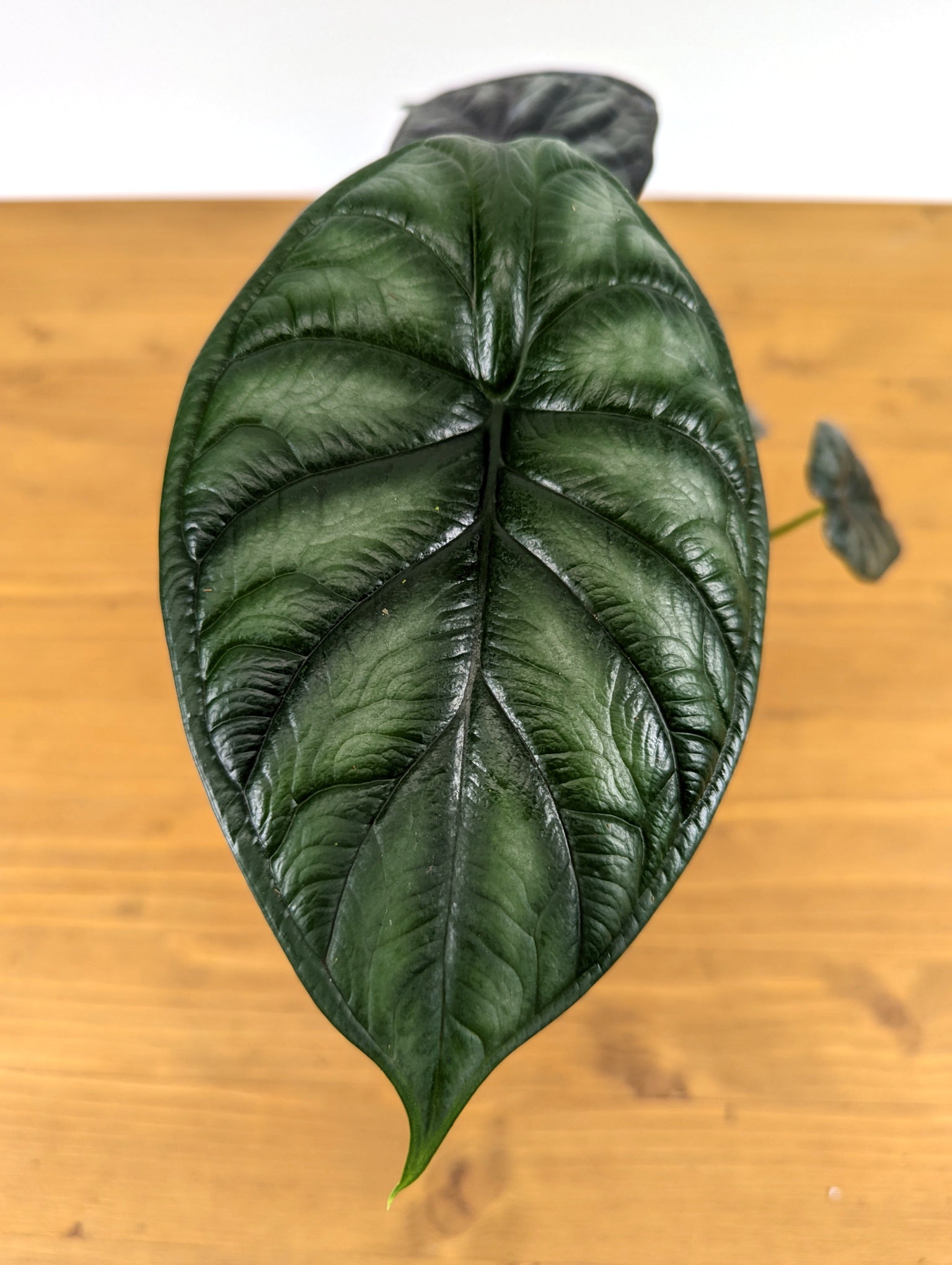-
How to care for your Alocasia
-
Feeding your Alocasia
-
Common Alocasia Issues
-
Are Alocasia Pet Friendly?
How to care for your Alocasia
Light
Your Alocasia plant will do best in a location with medium to bright indirect light. That means no direct sun rays, which can cause leaf burn. If you do not have a suitable location with appropriate natural lighting, consider using a grow light to supplement your plant's light requirements.
Water
Alocasia do best when they are watered regularly. Water when 25-50% of the soil is dry (top 1-2" of soil in a 4" pot for example). Water your plant until water drains through the bottom drainage holes and allow the pot to sit until it stops dripping.
Humidity
Alocasia are tropical plants that thrive in high humidity. Depending on your desires, you can acheive higher than ambient humidity with a mister, humidifier, or a pebble tray to hold water.
Temperature
Alocasia prefer warmer temperatures in the 65-85 degree range. In cooler environments you may expect the plant to grow a little slower.
Feeding your Alocasia
Alocasia are heavy feeders that require fertilizer to thrive. Plant products referred to as "nutrients" are not fertilizers and do not fulfill this need. Look for a product with an N-P-K (nitrogen (N), phosphorous (P), potassium (K)) value of 10-10-10 (referred to as triple ten) and use it to feed your plant once a month from spring through summer. When using a stronger fertilizer such as 20-20-20 NPK, dilute to half strength. These plants do not require, and won't benefit from fertilization during the dormant winter months. When fertilizing your plant, ensure the soil is moist (not dry) to avoid burning the plant.
Common Alocasia Issues
DormancyYour Alocasia will experience a dormant period in the winter months when it may drop leaves and stop producing new foliage (as a result of the plant's internal timer detecting less sunlight). During dormancy, keep your Alocasia in a warm spot. Reduce the frequency of watering but do not allow the potting mix to completely dry out. The plant will naturally come out of dormancy in the spring. When you notice new growth in the spring, begin to water the plant more frequently and provide the first spring fertilizer application.
Limp Leaves
Be sure that all your plants natural needs are being met.
- Is the soil the appropriate moisture?
- Is the plant on a regular watering schedule?
- If the soil is cracked-dry then bottom-water your plant by allowing the pot to sit in 3-4" of water for 30 minutes. If the top of the soil is still dry after this, top-water a small amount.
- Low humidity environments are not ideal for Alocasia and may result in drooping or dropped leaves. Increase the humidity with a humidifier or consider a plant cabinet to retain more moisture/humidity.
If the edges of your leaves are turning yellow (from the outside inward) this is typically a clear sign of a watering issue. Whether that is an environmental (low humidity) or soil moisture (watering) issue, it is easy to fix with a proper watering schedule. While yellow leaves will not return to green once they change color, a leaf that is not diseased should NOT be removed from your plant. Doing so steals nutrients from the plant it will otherwise recapture from the leaf as it dies and the plant recycles its nutrients.
If you are noticing more of a tan/paperlike texture to your leaves be sure that the plant is receiving the appropriate amount of light and that the foliage has not suffered from sun burn (yes plants get it too!).
Common Pests of Alocasia Plants
Inadequate watering schedules, a lack of proper nutrients and fertilizer, improper light, or extreme temperatures will stress your plant. A weakened or stressed Alocasia is more susceptible to pest infestations. Insects like spider mites can drain your plant of moisture with their sucking mouth parts, they pierce the leaf and leave tell-tale circular scars behind. This problem quickly manifests itself by yellowing leaflets and fronds. Scale, mealybugs, and spider mites occur frequently in indoor conditions. If not managed early on, pests may proliferate and move to other plants. The piercing mouths of the insects exhaust your plant and accelerate yellowing, especially if your Alocasia is already unhealthy from poor lighting, a nutrient deficiency, or improper soil moisture.These wounds can also be an opening for opportunistic pathogens.
Regularly misting or wiping down your plants leaf surfaces will help not only the photosynthesis and overall health of your plant it will help reduce the likelihood that your plant becomes a target for pests.
